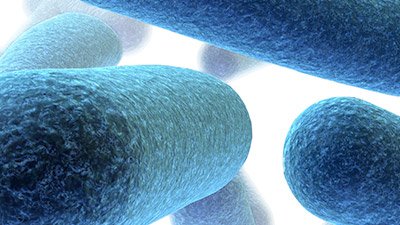
Bacteria: Evidence of Evolution?
Although we may not often think of it, none of us are ever alone—we all have bacteria both on and in our bodies that, among other things, help us to digest food. But is this evidence for evolution?
News Source
- ScienceNOW: “Evolutionary Relationships Hold, Even in Our Guts”
Researchers have previously asked what differentiates the species of bacteria living in one human from another. Are the differences based on diet, heredity, or something else? Hoping to learn more, a team led by Yale University evolutionary biologist Howard Ochman collected fecal samples from chimpanzees, gorillas, and humans, then sequenced the bacterial DNA in the samples.
The scientists were looking for a particular gene known to vary across bacterial species.
The scientists were looking for a particular gene known to vary across bacterial species. Based on that difference, their analysis could identify both the various species of bacteria and the frequency of each species in all of the samples. This served to estimate the types and frequency of bacteria in the stomachs of the primates and humans tested.
Next, the scientists assembled a “tree” of the primates species whose feces were sampled, building the branches based on similarity of gut bacteria. When finished, the researchers discovered that they had reconstructed the supposed evolutionary tree for primates, with the humans’ gut bacteria more similar to the chimps’ than to the gorillas’. Ochman’s team therefore concludes that evolutionary history is the most important driver in determining bacterial diversity in our bodies.
Does the research provide more evidence of the reality of evolution? We think not, because the scientists failed to account for the fact that some third factor may explain both the evolutionary tree and the “gut bacteria” tree. The evolutionary tree is based on morphological and genetic similarities between creatures. But it’s not unreasonable to think that morphological and genetic similarity between two organisms would lead to greater similarity in their gut bacteria (and, likewise, organisms with less in common genetically and morphologically should have more different gut bacteria populations). Therefore, both the evolutionary tree and the gut bacteria tree reflect the same underlying similarities; the question (which this study does not answer) is whether those similarities are the result of common descent or common design.
Further Reading
For More Information: Get Answers
Remember, if you see a news story that might merit some attention, let us know about it! (Note: if the story originates from the Associated Press, FOX News, MSNBC, the New York Times, or another major national media outlet, we will most likely have already heard about it.) And thanks to all of our readers who have submitted great news tips to us. If you didn’t catch all the latest News to Know, why not take a look to see what you’ve missed?
(Please note that links will take you directly to the source. Answers in Genesis is not responsible for content on the websites to which we refer. For more information, please see our Privacy Policy.)

Answers in Genesis is an apologetics ministry, dedicated to helping Christians defend their faith and proclaim the good news of Jesus Christ.
- Customer Service 800.778.3390
- © 2024 Answers in Genesis


